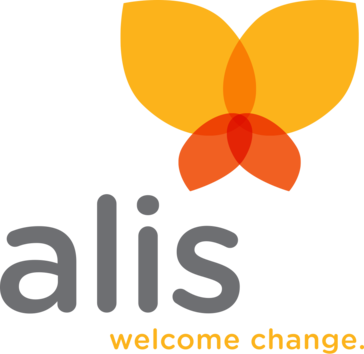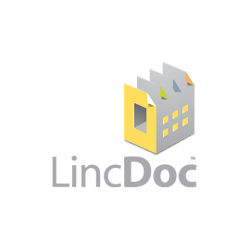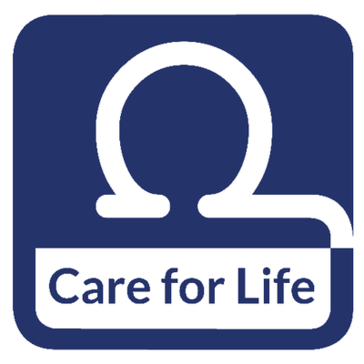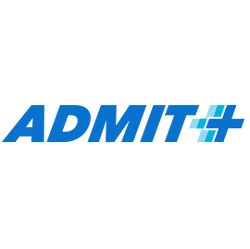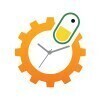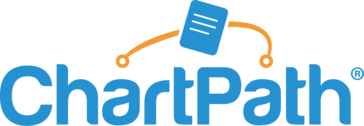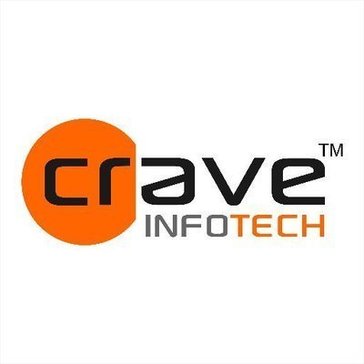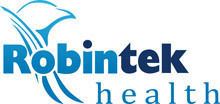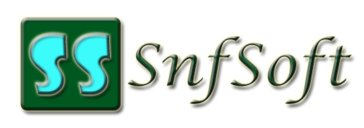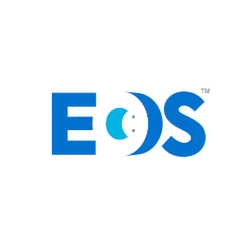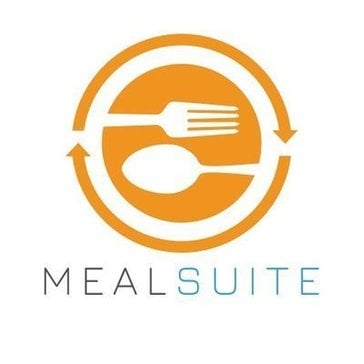- Storiicare is a platform that provides a comprehensive tool for service providers in various industries, enabling them to schedule activities, track engagement, monitor attendance, write progress notes, and create person-centered online profiles.
- Reviewers appreciate the user-friendly interface of Storiicare, its customizable features, and the excellent customer service, including the responsive onboarding teams that assist in setting up the platform and addressing queries in a timely manner.
- Reviewers experienced some issues with Storiicare, such as the lack of language translation for progress notes, incompatibility with certain billing systems, occasional software bugs, and limitations in customization options.
Best Assisted Living Software
Best Assisted Living Software At A Glance
G2 takes pride in showing unbiased reviews on user satisfaction in our ratings and reports. We do not allow paid placements in any of our ratings, rankings, or reports. Learn about our scoring methodologies.
- Overview
- Pros and Cons
- User Satisfaction
- Seller Details
Therap Services, LLC provides secure, web-based documentation, communication and electronic billing services to 7000+ Home and Community Based Service providers across the United States as well as for
- Director
- Quality Assurance Coordinator
- Hospital & Health Care
- Individual & Family Services
- 70% Mid-Market
- 20% Small-Business
515 Twitter followers
- Overview
- User Satisfaction
- Seller Details
ShiftCare is a home care agency software that makes it easy to schedule work, collaborate with caregivers and upload important care documentation, giving you and your team more time for what matters m
- Hospital & Health Care
- Health, Wellness and Fitness
- 95% Small-Business
- 5% Mid-Market
42 Twitter followers
- Overview
- Pros and Cons
- User Satisfaction
- Seller Details
ECP offers a comprehensive, all-in-one software platform tailored to the needs of senior living communities, streamlining care and operations. Our eMAR ensures accurate medication management with buil
- Hospital & Health Care
- Mental Health Care
- 50% Small-Business
- 37% Mid-Market
658 Twitter followers
- Overview
- User Satisfaction
- Seller Details
CareTracker helps long-term care facilities reduce risk and increase reimbursement as well as manage required resident documentation.
- Hospital & Health Care
- 44% Enterprise
- 40% Mid-Market
- Overview
- User Satisfaction
- Seller Details
PointClickCare Senior Living Core Platform streamline interdisciplinary workflows.
- Hospital & Health Care
- 46% Mid-Market
- 42% Enterprise
4,120 Twitter followers
- Overview
- Pros and Cons
- User Satisfaction
- Seller Details
The Aline senior living operating system tackles senior living’s most complex challenges in a single, user-friendly platform customized to support your business processes. Aline unites critical workfl
- 70% Mid-Market
- 30% Small-Business
- Overview
- User Satisfaction
- Seller Details
Comprehensive, user-friendly software provides automated workflows to help you gain efficiency, ensure compliance and maximize reimbursement for therapy services.
- Hospital & Health Care
- 50% Enterprise
- 33% Mid-Market
969 Twitter followers
- Overview
- User Satisfaction
- Seller Details
Optima Therapy for SNFs provides contract therapy companies, skilled nursing facilities (SNFs), assisted living facilities (ALFs) and continuing care retirement communities (CCRCs) with the industry’s
- Hospital & Health Care
- Health, Wellness and Fitness
- 44% Mid-Market
- 33% Small-Business
- Overview
- Pros and Cons
- User Satisfaction
- Seller Details
TheWorxHub, designed by Brightly Software specifically for healthcare, is the most user-friendly, cloud-based CMMS solution today, combining asset management, compliance readiness, and safety rounding
- Hospital & Health Care
- 75% Mid-Market
- 20% Small-Business
36,910 Twitter followers
- Overview
- User Satisfaction
- Seller Details
Say goodbye to having to purchase separate electronic health records to run separate service lines. Say hello to a single unified EHR that supports all your post-acute service lines, including home he
- Hospital & Health Care
- 50% Mid-Market
- 26% Enterprise
4,461 Twitter followers
- Overview
- User Satisfaction
- Seller Details
CareSuite is a quality EHR designed by senior living professionals to give you the most important tools first. CareSuite helps facilities achieve long term sustainability.
- Hospital & Health Care
- 73% Mid-Market
- 27% Small-Business
2 Twitter followers
- Overview
- User Satisfaction
- Seller Details
AL ADVANTAGE assisted living software is a "Best of Breed", cloud-based, platform designed by expert senior healthcare practitioners to assist caregivers in providing the highest quality care. Our tim
- Hospital & Health Care
- 50% Small-Business
- 33% Mid-Market
- Overview
- User Satisfaction
- Seller Details
RTasks by ResiDex is software designed to manage client and staff data for your assisted living, group home, or adult day. Use RTasks for e-charting, e-mars, assessments, care plans, incidents, notes
- Hospital & Health Care
- 57% Mid-Market
- 43% Small-Business
- Overview
- User Satisfaction
- Seller Details
Carefeed is an all-in-one operations platform to help senior living and long-term care communities simplify their daily operations. By replacing paperwork, spreadsheets, and disconnected tools with an
- Hospital & Health Care
- 50% Mid-Market
- 40% Enterprise
- Overview
- User Satisfaction
- Seller Details
Epicor Senior Living Solution (SLS) has been specifically designed for operators of independent living, residential aged care, and community care organizations. The software is offered in the cloud as
- 50% Mid-Market
- 33% Enterprise
9,429 Twitter followers
- Overview
- User Satisfaction
- Seller Details
iCareManager is a system for assisted living facilities and long term care facilities that provides features designed to help manage residents information, risks, and keep your facility in compliance.
- 50% Mid-Market
- 33% Enterprise
170 Twitter followers
- Overview
- User Satisfaction
- Seller Details
MatrixCare's skilled nursing software comes equipped with built-in validation rules to enable clinicians to document at the point-of-care and gather all the information needed to optimize reimbursemen
- 33% Enterprise
- 33% Mid-Market
5,459 Twitter followers
- Overview
- Pros and Cons
- User Satisfaction
- Seller Details
StoriiCare is a software platform for adult day care centers, assisted living providers and care homes. Used as a tool to instruct, record and improve quality of care, it enables care staff to digital
- 83% Small-Business
- 17% Mid-Market
- Storiicare is a platform that provides a comprehensive tool for service providers in various industries, enabling them to schedule activities, track engagement, monitor attendance, write progress notes, and create person-centered online profiles.
- Reviewers appreciate the user-friendly interface of Storiicare, its customizable features, and the excellent customer service, including the responsive onboarding teams that assist in setting up the platform and addressing queries in a timely manner.
- Reviewers experienced some issues with Storiicare, such as the lack of language translation for progress notes, incompatibility with certain billing systems, occasional software bugs, and limitations in customization options.
7,788 Twitter followers
- Overview
- User Satisfaction
- Seller Details
Synkwise is a SAAS startup focused on raising the standard of care for the aging population. Synkwise equips healthcare providers, nurses, and caregivers with meaningful tools to improve patient care
- Hospital & Health Care
- 100% Small-Business
- Overview
- User Satisfaction
- Seller Details
SAMS is a SaaS (Software as a Service) solution built specifically for managing long-term services and supports programs for the aging and disabled populations.
- 40% Mid-Market
- 40% Small-Business
994 Twitter followers
- Overview
- User Satisfaction
- Seller Details
ALIS is a holistic, resident-centric solution designed to aid in the unique real-world challenges of todays senior living communities. ALIS is inviting, self-explanatory and simple to navigate, allowi
- 60% Mid-Market
- 20% Enterprise
- Overview
- User Satisfaction
- Seller Details
Yardi Senior Living Suite is a platform that helps you manage resident care services, staff efficiency, revenue, and risk with automated workflows and reporting for executives, administrators, clinici
- 75% Mid-Market
- 25% Small-Business
11,351 Twitter followers
- Overview
- User Satisfaction
- Seller Details
Cloud based EHR electronic health record system designed and tailored specifically for the needs of the long-term care.
- 67% Small-Business
- 33% Mid-Market
- Overview
- Pros and Cons
- User Satisfaction
- Seller Details
Eldermark, the only true ERP software solution for the senior housing market, unites clinical, sales, engagement, and financial operations. Eldermark's state of the art technology with modern user int
- 33% Mid-Market
- 33% Enterprise
206 Twitter followers
- Overview
- User Satisfaction
- Seller Details
LifeLoop was founded with a singular goal: to help senior living communities flourish. Our passion to harness technology to improve people’s lives has made us the leading senior living software provid
- 33% Enterprise
- 33% Mid-Market
1,813 Twitter followers
- Overview
- User Satisfaction
- Seller Details
Aaniie Care (formerly Smartcare Software) is the fastest-growing all-inclusive workforce management and point-of-care platform, providing better patient outcomes, simplified back-office, increased sat
- Hospital & Health Care
- Health, Wellness and Fitness
- 65% Small-Business
- 32% Mid-Market
- Overview
- User Satisfaction
- Seller Details
American HealthTech provides post-acute care clinical and financial for the long term care industry. The clinical and financial is designed for nursing homes, skilled nursing facilities (SNF's), assis
- 100% Mid-Market
4,120 Twitter followers
- Overview
- User Satisfaction
- Seller Details
LincDocs eForms engage users with formatting assistance, contextual field presentation and intuitive navigation.
- 100% Mid-Market
446 Twitter followers
- Overview
- User Satisfaction
- Seller Details
MySeniorCenter is a complete Senior Center using the latest technology that provides full integration into State Reporting.
- 50% Small-Business
- 50% Mid-Market
- Overview
- User Satisfaction
- Seller Details
Ingenious Sales, Marketing, CRM, & Follow Up Automation Solutions For Senior Living, Assisted Living & Treatment Facilities
- 50% Mid-Market
- 50% Small-Business
- Overview
- User Satisfaction
- Seller Details
LTPAC Systems is a web-based for Skilled Nursing Facilities, Assisted Living Facilities and Residential Care Facilities.
- 100% Small-Business
- 33% Enterprise
- Overview
- User Satisfaction
- Seller Details
SimpleConnect (previously known as SimpleMDS) is the transmission solution for long-term care. SimpleConnect takes the messy manual complexities of MDS transmission and tracking out of your workflow,
- 50% Enterprise
- 50% Small-Business
350 Twitter followers
- Overview
- User Satisfaction
- Seller Details
This SaaS solution is built specifically for long-term services and supports programs.
- 50% Enterprise
- 50% Mid-Market
994 Twitter followers
- Overview
- User Satisfaction
- Seller Details
ActivityPro offers a range of recreation software solutions to meet the unique requirements of your long term care home, retirement residence, rehab center, or day program.
- 100% Enterprise
69 Twitter followers
- Overview
- User Satisfaction
- Seller Details
Admit+ is a digital resident admissions and management platform with ADDs (analytics, decisioning, documents and signatures) for Skilled Nursing and Senior Living.
- 200% Mid-Market
- 100% Small-Business
446 Twitter followers
- Overview
- User Satisfaction
- Seller Details
Set up your business for success with this comprehensive set of financial solutions that enables better controls to improve cash and costs. Used in conjunction with Revenue Cycle Management, our Finan
- 100% Enterprise
4,120 Twitter followers
- Overview
- User Satisfaction
- Seller Details
Caremerge provides EHR and Engagement solutions to Senior Living providers that promote wellness and inspire collaboration between residents, staff and families. Our simple and user-friendly solutions
- 100% Mid-Market
- Overview
- User Satisfaction
- Seller Details
Caresoft provide easy to use software for the Mental Health and Child Development industry.
- 100% Small-Business
25 Twitter followers
- Overview
- User Satisfaction
- Seller Details
As leaders in aged care management software, we understand that each facility has individual requirements. Since 1984, when the first Care Systems product was developed for an Aged Care facility in Qu
- 100% Mid-Market
- Overview
- User Satisfaction
- Seller Details
Carevium Assisted Living Software is a web-based resident care management application that provides services for elder care, assisted living, memory care, and more designed for use with mobile tablets
- 100% Mid-Market
86 Twitter followers
- Overview
- User Satisfaction
- Seller Details
Huddle helps retirement communities easily oversee care teams, streamlining operations and saving costs. All paperlessly. We help managers schedule and communicate with teams, track hours worked, and
- 100% Small-Business
- Overview
- User Satisfaction
- Seller Details
Cubigo is a leading all-in-one software platform for senior living operators, focused on integrating non-clinical and resident-centric services like Dining, Maintenance, Activities, Transportation, Di
- 100% Mid-Market
- Overview
- User Satisfaction
- Seller Details
GoldCare Long Term Care is an integrated software solution that helps manage outcomes and support coordinated care for home care. community support, children and disability services, and more.
- 100% Enterprise
- Overview
- User Satisfaction
- Seller Details
IHN iPortal is a comprehensive Clinical and Financial Management solution. IHN iPortal can be purchased as a total solution or by module.
- 100% Small-Business
- Overview
- User Satisfaction
- Seller Details
LTC Solution Management Information Suite for assisted living and memory care facilities allows you to track all resident, operational, and financial information with one tool in real-time from any co
- 100% Small-Business
- Overview
- User Satisfaction
- Seller Details
PALs Executive is an all-in-one electronic health platform for assisted living providers that helps you drive resident-centered care while meeting financial goals and regulatory compliance.
- 100% Small-Business
- Overview
- User Satisfaction
- Seller Details
A messaging, communication, and operational efficiency platform that helps long-term care organizations contain costs by building a stronger census, improving staff retention, and eliminating unnecess
- 100% Small-Business
- Overview
- User Satisfaction
- Seller Details
Responder 5 critical communication and nurse call solutions help staff provide the best possible patient care and enhanced patient and staff satisfaction.
- 100% Enterprise
- Overview
- User Satisfaction
- Seller Details
Responder 5000 is a communications solution that helps drive better productivity and satisfaction in the delivery of care at nursing homes.
- 100% Enterprise
- Overview
- User Satisfaction
- Seller Details
Sagely provides technology systems to track seniors' calendars, participation and level of engagement in events and activities.
- 50% Enterprise
- 50% Small-Business
- Overview
- User Satisfaction
- Seller Details
Senior Insight assisted living software solution provides a full array of features designed specifically around providing the highest level of support for residents and staff. With over 15 years of op
- 100% Enterprise
- Overview
- User Satisfaction
- Seller Details
Paperwork stinks! Transitions around aging are emotional, impersonal, and fraught with paperwork and red tape. Compliance risks and human error have removed all hope of a more senior-friendly experie
- 100% Mid-Market
- Overview
- Pros and Cons
- User Satisfaction
- Seller Details
Whether you’re a solo family practice provider or a large specialty group, if you’re looking for a long-term, stable EHR company that gets to know and serve you and your practice, you’ve come to the r
- 100% Small-Business
454 Twitter followers
- Overview
- User Satisfaction
- Seller Details
TotalCare Application Suite is a web-based solution that offers features to manage your community with resident tracking, staff tracking, a billing system, and more.
- 100% Small-Business
77 Twitter followers
- Overview
- User Satisfaction
- Seller Details
- 100% Small-Business
- Overview
- User Satisfaction
- Seller Details
Access CareBlox is a software for running and managing residential and nursing homes that can access care home management from anywhere with complete peace of mind, choose the combination of modules t
4,134 Twitter followers
- Overview
- User Satisfaction
- Seller Details
Acodia Care is an all-in-one software solution tailored for outpatient and specialized care providers in Germany. Designed with real-world professionals, it simplifies care documentation, scheduling,
- Overview
- User Satisfaction
- Seller Details
ADL is an integrated solution that provides a method to record and electronically transfer resident healthcare information from the point of care to anyone within the organization.
40 Twitter followers
- Overview
- User Satisfaction
- Seller Details
AHT Revenue Cycle Managements integrated Revenue Cycle Management (RCM) suite helps skilled nursing organizations like yours to efficiently manage the entire revenue cycle from admissions and eligibil
- 100% Enterprise
4,120 Twitter followers
- Overview
- User Satisfaction
- Seller Details
ALChartsPlus is a comprehensive, simple to use documentation system for care planning and managing your assisted living home including medication management and staff scheduling. We keep you focused o
- 100% Mid-Market
29 Twitter followers
- Overview
- User Satisfaction
- Seller Details
AL Cloud Care is assisted living software
- Overview
- User Satisfaction
- Seller Details
ALEFsys is a web-based, integrated, assisted living software solution designed for administering ALFs with features to help you manage efficiently, liability, care, and your bottom line.
- Overview
- User Satisfaction
- Seller Details
August Health is the EHR platform for forward-thinking, care-obsessed senior living operators. The platform is purpose-built for proactive care, enabling communities to shift from reactive tactics to
- Overview
- User Satisfaction
- Seller Details
CareCommunityOS is a comprehensive senior living software designed to elevate the standard of medication management in your care community. Senior living facilities prefer this software because it's a
- Overview
- User Satisfaction
- Seller Details
CareComplete Plus Professional Care Management Software Brings Immediate Benefits
436 Twitter followers
- Overview
- User Satisfaction
- Seller Details
Carebeans provides innovative digital care management software for the social care sector, including residential and nursing care homes, domiciliary care, disabilities and supported living service pro
- Overview
- User Satisfaction
- Seller Details
CareHQ is a cloud-based Customer Relationship Management (CRM) platform designed from the ground up for the UK care market that will help you transform your business through better tools, insights, wo
- Overview
- User Satisfaction
- Seller Details
- Overview
- User Satisfaction
- Seller Details
Caribou CLC Suite to automate resident care workflow processes for Community Living Centers.
6,408 Twitter followers
- Overview
- User Satisfaction
- Seller Details
Clarity Healthcare for CCRS streamlines resident assessments and reporting for complex continuing and long-term care providers. Clarity Healthcare provides a integrated web-based solution for the capt
1,027 Twitter followers
- Overview
- User Satisfaction
- Seller Details
- Overview
- User Satisfaction
- Seller Details
ChartMeds E-MAR System keeps you in compliance with state regulations, ensures patient safety, reduces errors, and increases your profitability
- Overview
- User Satisfaction
- Seller Details
ChartPath offers long-term post-acute care (LTPAC) solutions that provide better charting, billing operations and revenue cycle management.
- Overview
- User Satisfaction
- Seller Details
Check-In Plus is Employee Presence and Awake Status Monitoring for Residential Group Homes and Home Healthcare. SteadyCare’s Check-In Plus system helps group home agencies monitor employee attendance
- Overview
- User Satisfaction
- Seller Details
Crave InfoTech Integrated Healthcare Management Solution (cIHMS) is a completely integrated end-to-end solution which offers seamless integration with SAP Business one ERP and HANA Platform.
1,182 Twitter followers
- Overview
- User Satisfaction
- Seller Details
COMET is an integrated solution with multiple application to help manage all your areas of activities in a single solution including, resident information and census, patient/resident accounts, EMR/cl
94 Twitter followers
- Overview
- User Satisfaction
- Seller Details
Why Community Hub for Senior Living? -Track your contacts for proactive crisis management -Increase safety for your residents and staff -Enhance service and unify execution Community Hub by Domain 6
- Overview
- User Satisfaction
- Seller Details
Robintek creates customized web pages that integrate with their Content Management System, specifically designed to meet the needs of the Continuing Care Retirement Communities.
- Overview
- User Satisfaction
- Seller Details
Daycenta is the ultimate in advanced adult day care management, is a cloud-based platform that features the next generation of robust workflow management and financial solutions for both Medical and N
- Overview
- User Satisfaction
- Seller Details
eCase is a cloud based end-to-end enterprise system for care providers which features include Resident Management, Alerts, Assessments, & more.
- Overview
- User Satisfaction
- Seller Details
A Distinguished Software Provider for the Long Term Care Industry
- Overview
- User Satisfaction
- Seller Details
EOS contributes to seamless employee onboarding for long-term care facilities.
446 Twitter followers
- Overview
- User Satisfaction
- Seller Details
eResidentCare is a web-based billing software designed for management of assisted living facilities that includes resident charting, scheduling and more to help you manage your patients and bottom lin
7 Twitter followers
- Overview
- User Satisfaction
- Seller Details
ExaCare is a purpose built all-in-one solution for assisted living communities. It improves resident care, optimizes your staff management & streamlines your marketing needs allowing you to focus
- Overview
- User Satisfaction
- Seller Details
A Compliance and Care Management System Designed for Care Managers.
- Overview
- User Satisfaction
- Seller Details
GEHRIMED is the leading ONC-certified electronic health record (EHR) platform specifically designed for long-term/post-acute care (LTPAC) practitioners and multi-provider, multi-location practices. As
- Overview
- User Satisfaction
- Seller Details
The Geriatric Report provides a full range of clinical case - patient management functionality. It can handle an unlimited number of patients and clients.
54 Twitter followers
- Overview
- User Satisfaction
- Seller Details
- Overview
- User Satisfaction
- Seller Details
Long-Term Care Software for Your Long-Term Needs
- Overview
- User Satisfaction
- Seller Details
HousingTree allows you to work with your leads, clients, facilities and referrals providing a high standard customizable platform to interact, keep track and invoice within minutes. Increase your re
1 Twitter followers
- Overview
- User Satisfaction
- Seller Details
Senior Referral Management is a web based application designed for senior referral tracking and placement to Assisted Living facilities. HousingTree is a facility referral network.
1 Twitter followers
- Overview
- User Satisfaction
- Seller Details
Senior living communication and operations technology.
511 Twitter followers
- Overview
- User Satisfaction
- Seller Details
IQI Intuition is a suite of infection control/surveillance and QA tools with comparison reports, floor maps, line listings.
- Overview
- User Satisfaction
- Seller Details
The iSMAF software enables you to do your residents’ functional evaluations. Despite the fact that it is innovative, the iSMAF software is made-up of clinical and management tools, scientifically vali
- Overview
- User Satisfaction
- Seller Details
KareInn delivers smart care management software, helping operations run more smoothly and improving resident health & wellbeing.
603 Twitter followers
- Overview
- User Satisfaction
- Seller Details
The easiest and cheapest way to ditch paper care recording and improve the quality of care in your care home. Log my Care is care home software made simple. Effortlessly manage care delivery from our
- Overview
- User Satisfaction
- Seller Details
MealSuite software simplifies recipe design, menus, nutritional analysis, costing, inventory, resident & patient management, allergens, diets and preferences. MealSuite is fully integrated, suppor
- Overview
- User Satisfaction
- Seller Details
MED e-care has recognized and developed the tools to meet the specific needs of Retirement Homes. MED e-care offers comprehensive set of solutions to address the complex care needs of the present day
- Overview
- User Satisfaction
- Seller Details
Momentum AMS, is a software application that allows healthcare providers to easily manage and administer healthcare assessments, enhancing the decision making and care planning ability of healthcare p
7 Twitter followers
- Overview
- User Satisfaction
- Seller Details
RTLS In Motion is a smart nurse call system, that helps senior care campuses improve resident safety and improve the overall level of care.
7 Twitter followers
Learn More About Assisted Living Software
What is Assisted Living Software?
Assisted living software manages resident care and facility operations, automating processes, coordinating and managing care, and reducing waste and unnecessary expenditures. Assisted living solutions are comprehensive management systems that are made up of any of the following features: facility management, EHR, eMAR, patient medical records management, and facility marketing. The software, at its core, helps your facility manage the well-being, security, and satisfaction of your residents. Additionally, many solutions support interoperability and connecting the assisted living facility with a network of health care providers and partners. The benefits of such a connection include the facilitation of smoother transitions of care and the ability for caregivers to respond quickly to changes in care plans. With an assisted living solution, you can also leverage the overall health care community and network and mediate potential risk in your residents.
Assisted living software enables the improvement of the kind and quality of services provided by the facility to residents. Assisted living facilities—also referred to as long-term care, senior living, hospice, nursing home, or CCRC—are, after all, made up of residents who now expect a high quality of life along with ancillary care services rendered. Assisted living software generates data on patients, care plans, resource allocation, and referral trends. Assisted living facilities can leverage such data to track and report on decision-making factors to identify which initiatives are producing desired results.
Key Benefits of Assisted Living Software
- Automates repetitive and manual tasks that detract from providing optimal delivery of care
- Streamlines staff scheduling, resource allocation, and communication with both first-party care providers and residents and residents’ families
- Provides insight into the performance and profitability of an assisted living facility
- Improves resident satisfaction
Why Use Assisted Living Software?
Aside from the above-mentioned facility management features and the convenience that automation brings to any health care organization, there are additional benefits that the software can bring to your facility:
Improve quality of care — Assisted living software automates manual tasks and streamlines daily workflows. By doing so, the software simplifies the management process of maintaining the assisted living facility, allowing caregivers to focus on delivering care and reducing chances of burnout.
Ensure operational efficiency — Assisted living software generates reports on occupancy, resident rosters, census, costs and finances, and medication management. The software minimizes duplicate work, streamlines communication between medical professionals, and keeps track of all activities happening within the facility. Visibility across the entire organization enables and increases efficiency.
Improving accuracy — Assisted living software improves accuracy in areas such as medication dispensing, data collection, audit preparation, regulatory compliance, remote care monitoring, referral tracking, and resident incident monitoring. With assisted living software, caregivers and facility operators can automate the notation and organization of clinical documentation, better coordinate the exchange of data between primary care and ancillary care, and ensure transparency of all activities within an assisted living facility.
Who Uses Assisted Living Software?
Assisted living software is designed to be used by managers, operators, and staff of assisted living facilities.
Facility owners, administrators, managers, and directors — These are the people who help run an assisted living facility. They can be front staff, head of marketing and communications, or director of operations. They do not have to be skilled nurses to make sure that the operational aspects of an assisted living facility run smoothly.
Nursing staff, both internal and outsourced caregivers — These are skilled nurses and health care professionals who provide custodial and clinical care to the residents of an assisted living facility. Having access to even simple information like census of facility can help schedule the number of staff available as well as coordinate shifts to accommodate the needs of the residents.
Nutritionists, dieticians, activity coordinators — These are professionals who are equipped to create and dispense meals plans or coordinate recreational activities that will engage residents. They must have access to patient records to ensure that they do not prescribe a meal plan or physical activity that will compromise the resident.
Pharmacists and medication-dispensing professionals — Many assisted living facilities have a direct line or some sort of network connection with pharmacies. This helps with accurate medication dispensing and adherence. A unified patient records database helps reduce any medication discrepancies.
Nurses, doctors, physicians, and other medical professionals that have referred the resident to the facility — Assisted living facilities do not exist in a vacuum. They depend on referrals from hospitals to maintain the minimum number of residents in the facility as well as confirm whether a certain facility is more appropriate than another for an incoming resident.
Kinds of Assisted Living Software
The different kinds of assisted living software aligns with the different kinds of assisted living communities that exist:
Assisted living— Assisted living communities provide housing and social opportunities for the aging community, as well as basic health services. However, because assisted living health services are not provided by skilled nursing caregivers, assisted living solutions should offer a staffing, scheduling, or caregiver outsourcing module that helps coordinate services rendered with the resident’s schedule.
Senior living — Senior living homes, also referred to as independent senior living, provide housing, transportation, and recreational activities for the aging population, but health care services are not necessarily offered. Managers and operators of senior living communities should look for solutions that help maintain the community, encourage communication between residents and operators, and offer functionality like meal planning, activity, and care planning.
Skilled nursing — Skilled care can only be dispensed by a nurse or medical professional that has a license to practice medicine. For example, the care that a non-skilled caretaker can provide is limited to daily living activities like bathing, dressing, and eating. Skilled nursing software, then, must have a validating or credentialing module that helps assisted living facilities verify the abilities of the nurse prior to hiring them.
Continued care retirement communities (CCRC) — CCRC provide housing to a variety of seniors, offering a continuum of care that can benefit both residents with declining health and residents that want to retire to an active, social community that offers health care services. Assisted living solutions that cater toward CCRC must have a robust resident care and documentation module to help operators and caregivers keep tabs on the progress of their residents.
Hospice — Hospice care manages the care of terminally ill patients, so assisted living solutions tailored to hospice must have strong data sharing capabilities to better streamline interoperability and exchange of patient data between hospital and hospice.
Assisted Living Software Features
Assisted living software varies in comprehensiveness. Some are complete management systems, some focus on streamlining front-office responsibilities, some coordinate nutrition and recreation activities for assisted living facilities, and some integrate with or offer insurance claims management functionality to simplify billing and accounting. The following features typically appear in any type of assisted living software.
Resident care management — Automates the creation of service plans, captures and documents delivered care and services, and schedules and analyzes resident assessments. This allows care managers to accurately assess resident needs.
Staff management — Centralizes staff records, manages the hiring and verifying of prospective caregivers, automates scheduling staff shifts, and facilitates eased communication between managers and staff.
Clinical communication and collaboration — Facilitates the immediate exchange and transmission of care summaries, referrals, discharge notifications, lab results, and other relevant data between care teams and health care facilities.
Financial management — Monitors budgeting and expenses, payables, and census and occupancy information. Generates reports on financial operations, equipping facilities with actionable insights.
Additional Assisted Living Features
Resident contact management — Maintains a database of resident profiles and contact details. Enables documentation of any incidents, behaviors, or events that may befall residents. Helps facility managers and care staff get a snapshot of each resident.
eMAR integration — Solutions that integrate with electronic medical administration records (eMAR) help the handling and monitoring of dispensing medication to residents.
Patient engagement — Provides either a portal for patient families to get updates about the resident or provides interactive patient care (IPC) tools that help residents interact with their caregivers in a modern way.
Potential Issues with Assisted Living Software
Resident expectations — The expectations of senior citizens are changing. They’re becoming more tech savvy and social and refusing to sacrifice the lifestyle they had been accustomed to prior to entering the assisted living community. If your current programming, services, and technology are unable to keep up with resident expectations and needs, then your facility will lose money, no matter what kind of solution you attempt to deploy. Make sure that the assisted living software you end up choosing can help you collect and address complaints, issues, and lines of communication.
Employee use — If the product is difficult, confusing, or time-consuming to use, your assisted living staff will be less motivated to move from your current system to a new, automated one that requires training and onboarding. Carefully consider whether you’re choosing a solution that truly fits your needs or whether it’s full of unnecessary functionality. Then consider what extra resources and support you will need for easier implementation and adoption of the tool by all of your employees.
Data breach — While assisted living software digitizes and centralizes patient and facility data, it opens up the risk for potential data breaches. Whether the software is hosted in the cloud or on premise, it can still create a security vulnerability for any unauthorized access from the community. Make sure that your facility is equipped to handle security risks.












